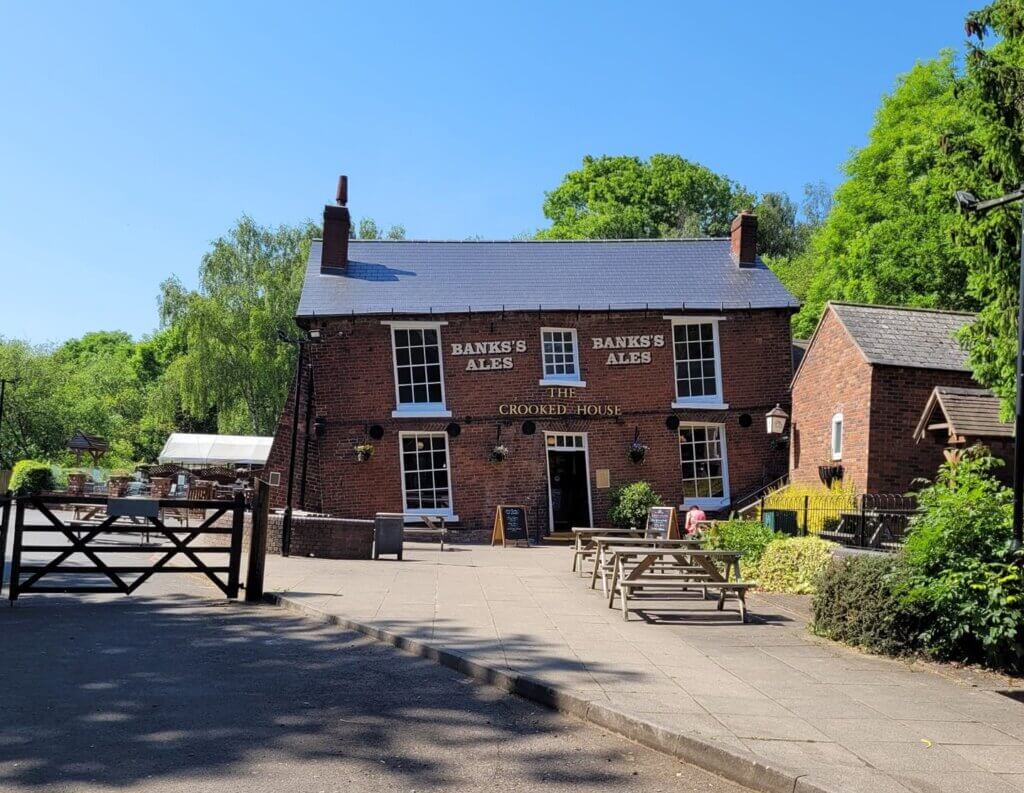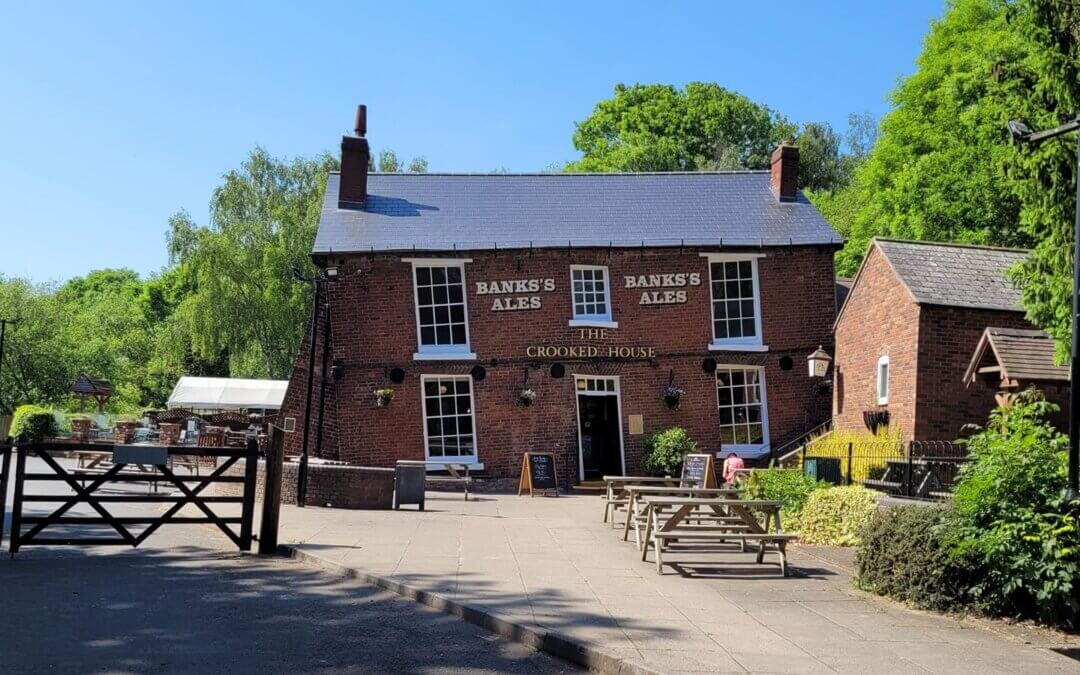Was the demolition of The Crooked House pub allowed?
You have probably seen various news reporting on the recent fire and subsequent demolition of The Crooked House pub. Many are saying that the demolition was illegal? But what are the facts surround this from a planning angle? What are the owners of a property allowed to do?
Let’s look at some facts surrounding the pub.

Copyright Jackie Walford
The Crooked House was a pub in Himley, which is near Dudley in South Staffordshire. It wasn’t listed, although Historic England did receive a request to granted listed status in July 2023 and had started investigating this option. The building was originally an 18th-century farmhouse, built in 1765, before it was converted into a pub in the 1830s. It was originally called Glynne Arms. It was formally renamed in 2002 as ‘The Crooked House’.
Due to local mining the property slipped by around 4 feet at one end, giving it the nickname of ‘Britain’s wonkiest pub’ – optical illusions seemed to suggest that a penny would roll up hill on the bar.
in March 2023 The Crooked House was put up for sale by owners Marstons for £675,000. The sale of the pub was completed on 27th July 2023. The Guardian reported that it had been purchased by ATE Farms Ltd, owned by Carly Taylor a local company.
On Saturday evening, 5th August 2023 a fire ripped through The Crooked House. Fire crews were partially blocked by mounds of earth blocking the road. The public house was gutted.
Station commander Liam Hilton of Staffordshire Fire Service said on Monday that there were “mounds of mud and soil placed in the centre of the road and covering the whole of [it].”
On 7th August a digger was brought onto the site and the structure was demolished.
It has been reported that the police are treating the blaze as arson. But what about the demolition. Was that authorised? What does the GPDO say about such demolition? If the owners had posted on the Planning Geek Community asking or had a Zoom session with Ian – what would his advice have been?
Video of the demolition shared on social media – copyright unknown
The questions surrounding the demolition of The Crooked House
Whilst we can’t comment on the fire, we can comment as to what we think about the demolition of The Crooked House – was it legal? Was it authorised? Was it a criminal act? Was it above board?
Straight off, we are not a legal website, all we can work on is planning legislation that we know about. We also are not privy to any conversations or agreement made between the owners, their agents or the local authority.
On Tuesday, South Staffordshire council confirmed it was investigating planning breaches, saying officers had spoken to a representative for the landowner after the fire and before diggers were moved on site and the building was completely demolished.
“The agreed course of action included the removal of three elements of the first-floor front elevation only. This was only to avoid the weak parts of the structure from falling,” said Roger Lees, the leader of the council.
“At no point did the council agree the demolition of the whole structure, nor was this deemed necessary. This council finds the manner in which the situation was managed following the fire completely unacceptable and contrary to instructions provided by our officers.”
So from the statement by the leader of the council, no agreement had been made to fully demolish. But did they need permission in advance from the local authority? Maybe not according to the GPDO.
The General Permitted Development Order (GPDO) does allow for some demolition or even total demolition of fire damaged buildings without prior permission from the planning department or the local authority. But what are the rules?
The GPDO does allow for demolition, subject to written justification if the demolition is urgently required for health and safety. But does that apply here?
The property is not in a conservation area and is larger than 50 cubic metres. Therefore the demolition is “development but not relevant demolition”. It does require planning permission of some sort, but failure to obtain is unlawful as opposed to illegal. It isn’t a criminal offence as far as we are aware. It can also be permitted development under Part 11 of the GPDO. It isn’t listed, so no listed building consent is required. The GPDO can act as the planning permission in some circumstances.
Then we need to ask a series of questions….
Have Part 11 rights been removed by an Article 4 or previous planning condition? No, not that we are aware of.
Is the demolition urgently required for health and safety? Could be argued yes it is or was.
Has the building been rendered unsafe and can works of repair to secure safety or health? Maybe not due to the ferocity of the blaze.
All the above answers point towards the demolition being allowed under Class B of Part 11 as long as written justification is made after the event.
It was all looking good, until we get to B1.(c) which says Class B is not permitted if….
(c) the building is used, or was last used, for a purpose falling within—
(i) article 3(6)(p) (drinking establishments etc.) of the Use Classes Order; or
(ii) article 3(6)(q) (drinking establishments with expanded food provision) of that Order;
Therein lies the problem – it does require planning permission to demolish, as it was a pub.
Now, other health and safety laws may kick in and that is not the debate here. This article is to establish as to whether Class B even applies as suggested by various news outlets. Even the council seems to suggest that it might apply if the steps were carried out – the council should be saying that because it operated last as a pub, Class B does not come into the equation and that full planning is required.
If the property had not been a pub, it is likely that it would have complied with Class B – the fact that it was closed doesn’t alter the fact – until there is a change of use it remains a Sui Generis drinking establishment as defined in the 1987 Use Class Order (as amended).
So there you have it.
If the owners had posted on the Planning Geek Community asking or had a Zoom session with Ian the advice would have been not to demolish as it doesn’t comply with the GPDO.
Disclaimer: To the best of our knowledge the facts presented here are correct, but we are not lawyers and are not privy to a lot of discussions which have not been made public – therefore the demolition may have been permitted by some other legislation. We do not believe however it complied with planning – unless you know better. if so please get in touch.
Back to the News Section of Planning Geek
Page updated: 10th August 2023




